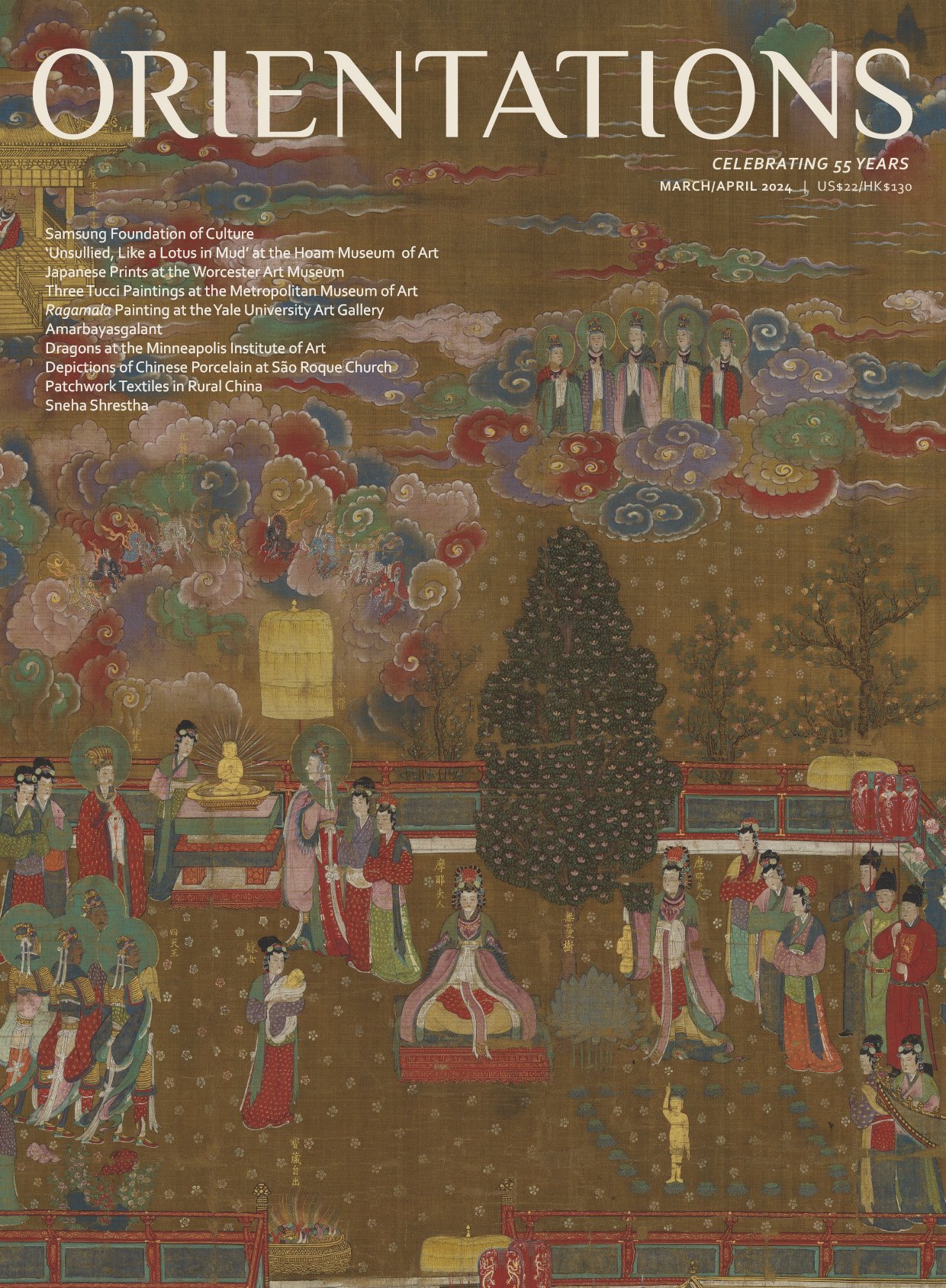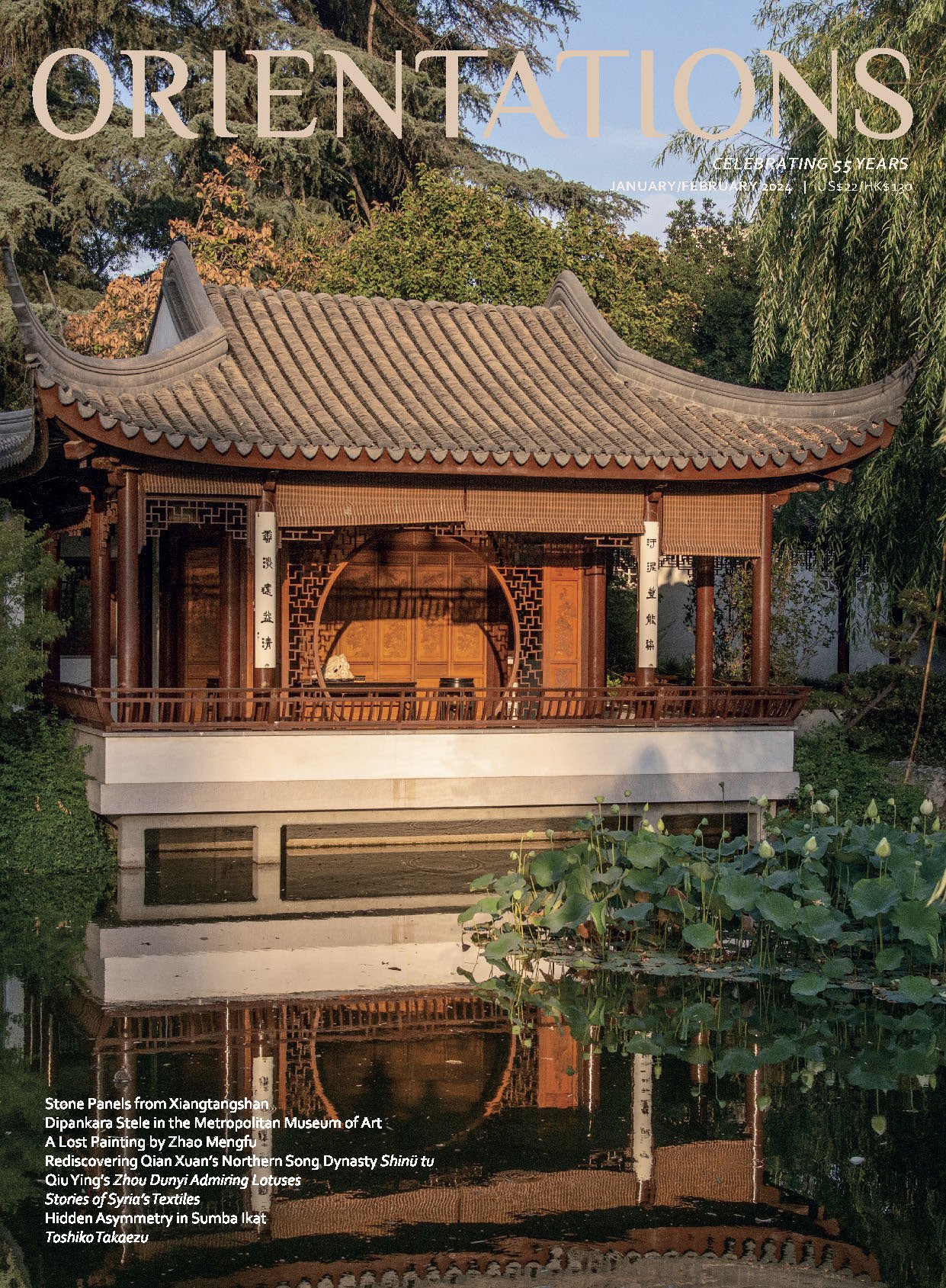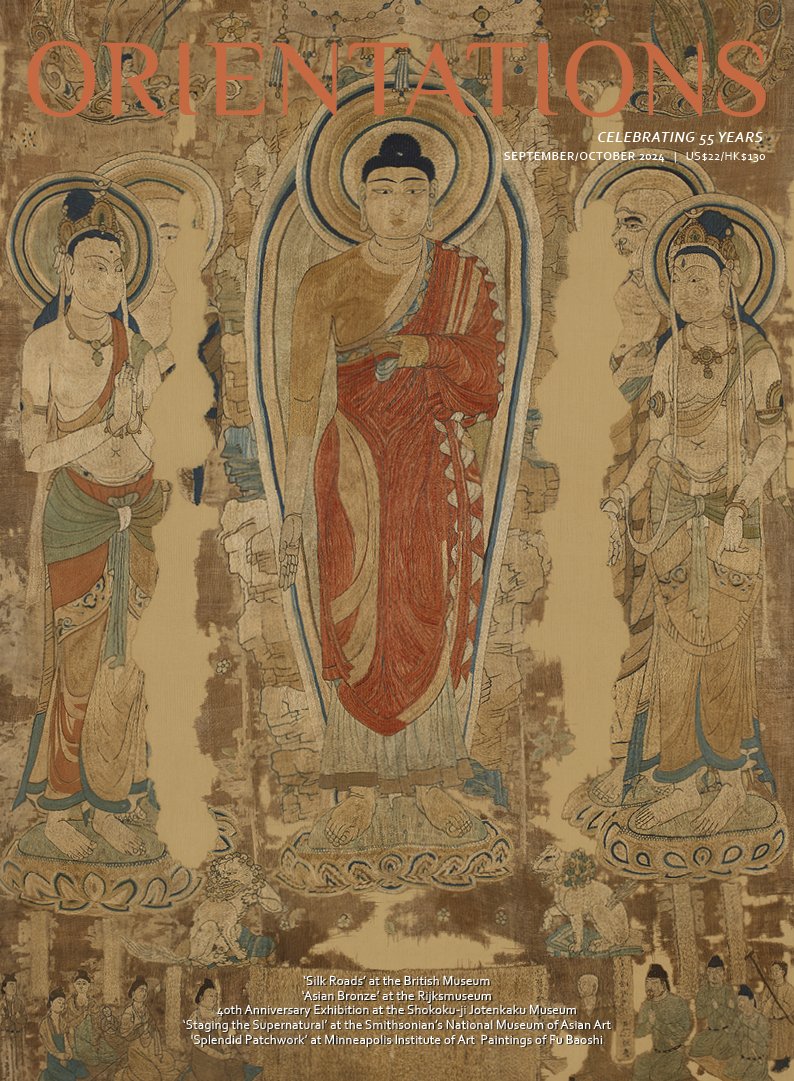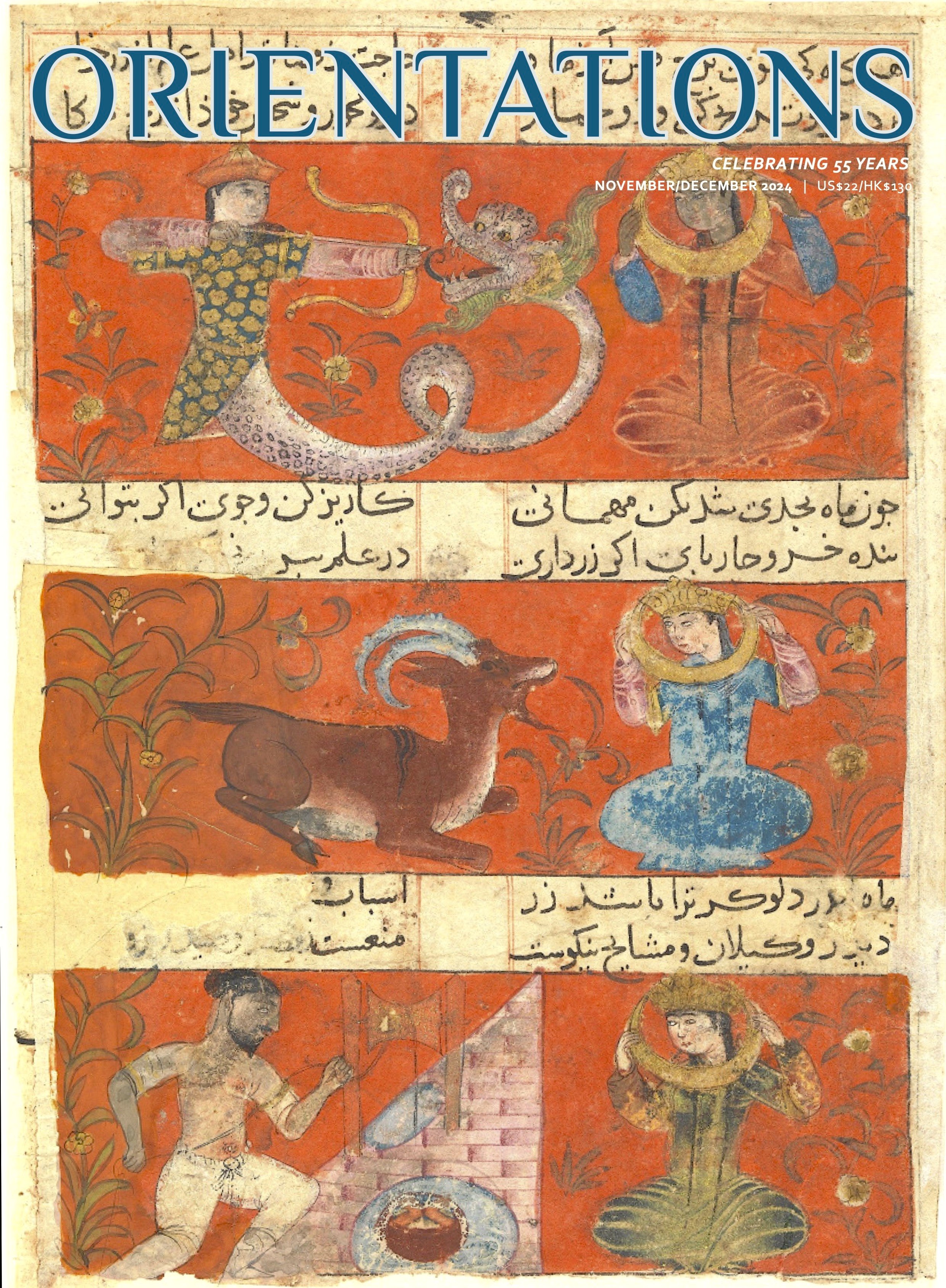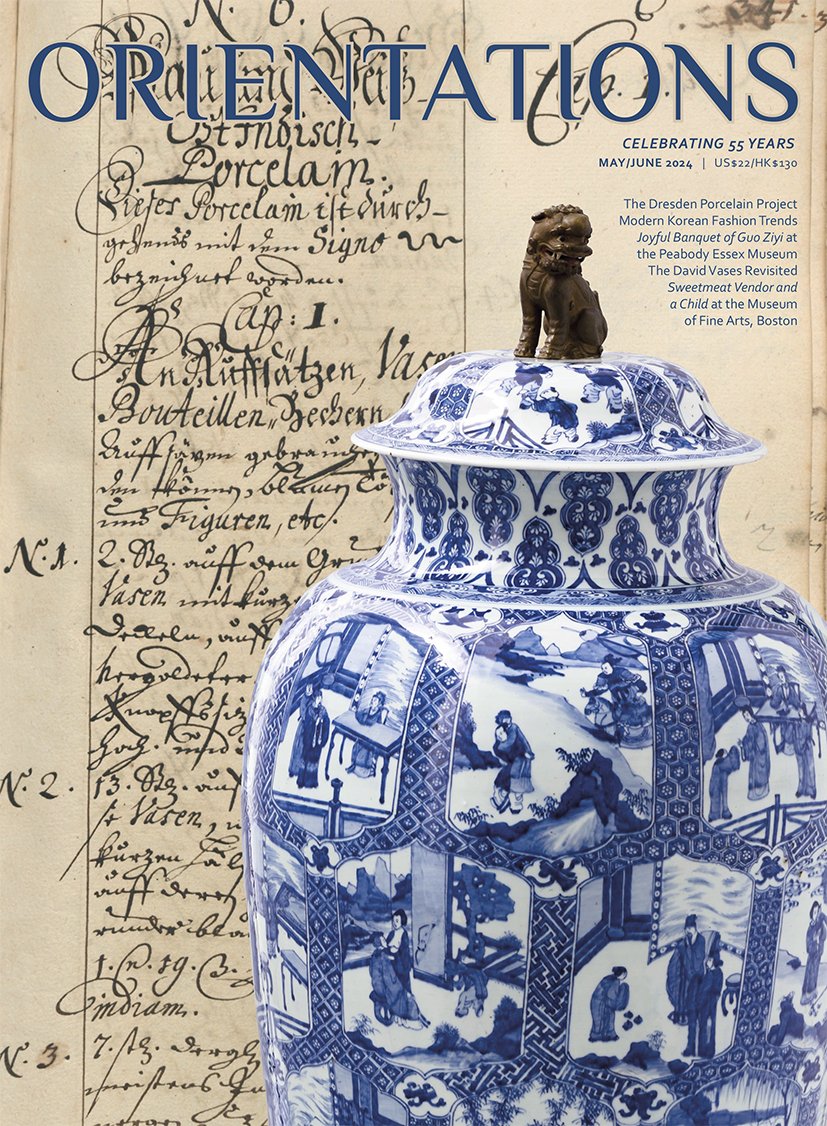 Image 1 of 1
Image 1 of 1


MAY/JUN 2024
VOLUME 55 - NUMBER 3
One of the places I visited during my hiatus from Hong Kong in 2022 was Dresden, a city that endured extensive British and American aerial bombing in World War II. As the traditional capital of Saxony in Germany, it is home to numerous historic landmarks and museums. The royal East Asian ceramic collection of more than 8,000 objects at the Porzellansammlung (Porcelain Collection) of the Staatliche Kunstammlugen Dresden (Dresden State Art Collections) is renowned among ceramics enthusiasts. This issue celebrates the culmination of the Dresden Porcelain Project, an initiative launched in 2014 to digitize and research this historic collection, one of the largest East Asian reference collections in the world—now published in its entirety on a new interactive website. This unique group of objects provides a snapshot of collecting in the West and the ceramics trade between Asia and Europe from the late 16th to the early 18th century. Without a doubt, the project is an enormous contribution to the field and will hopefully inspire others to embark upon similar programmes to make their collections more accessible.
‘Korean Couture: Generations of Revolution’ opened at the Cleveland Museum of Art this April and features excavated garments from the 16th and 17th centuries in the collection of the Gyeonggi Provincial Museum alongside couture works by modern and contemporary designers. A late 19th or early 20th century ten-panel Korean screen depicting a scene from the residence of the Tang dynasty (618–907) general Guo Ziyi (697–781), recently gifted to the Peabody Essex Museum, shows how artists adapted to changing market demands.
We present the third in a series of articles on the temple vases from the Sir Percival David Collection, now housed in the British Museum, which delves into the significance of the male and female phoenix designs on the bands around the necks. We look at the history of the Society of Friends of the Guimet Museum and their contributions to the institution over the years.
Susan Beningson interviews Xu Bing on the eve of ‘Xu Bing: Word Alchemy’ at the Asia Society Texas Center, one of the artist’s largest solo shows in the United States to date, with works spanning from 1975 to the present.
Lastly, we present the winning essay of the inaugural Susan Chen Foundation and Orientations Young Art Writers Award. The competition was launched to identify new talent and foster their development through a series of writing workshops to turn their research into a publishable paper. Ocean Wang, a recent graduate in art history from the University of Hong Kong, discusses the street-vendor genre in Chinese paintings of the Song (960–1279) and Yuan (1272–1368) dynasties.
FEATURES
Karolin Randhahn and Cora Würmell. A Modern Approach to a Historical Collection: The Royal Dresden Porcelain Collection
Ruth Sonja Simonis and Cora Würmell. Augustus the Strong: An Exceptional Collector
Karolin Randhahn and Ruth Sonja Simonis. Porcelain Meets History: The Japanese Palace Inventories of 1721 and 1779
Christiaan J. A. Jörg . Treasures in the Royal Collection
Sooa Im McCormick. Reading Early Modern Korean Fashion Trends through Excavated Garments
Jiyeon Kim. Joyful Banquet of Guo Ziyi: A New Arrival in the Peabody Essex Museum
Peter Y. K. Lam. The David Vases Revisited III: The Phoenix Bands
Géraldine Lenain. The Society of Friends of the Guimet Museum
Ocean Wang. Remembrance of Things Past: Negotiating a Scholar-Official Identity in Sweetmeat Vendor and a Child
Susan L. Beningson. ‘Word Alchemy’: A Conversation with Xu Bing
REVIEWS
Nancy S. Steinhardt. China’s Southern Paradise: Treasures from the Lower Yangzi Delta
Edith Terry. ‘Art Personalised’ Hong Kong Museum of Art
VOLUME 55 - NUMBER 3
One of the places I visited during my hiatus from Hong Kong in 2022 was Dresden, a city that endured extensive British and American aerial bombing in World War II. As the traditional capital of Saxony in Germany, it is home to numerous historic landmarks and museums. The royal East Asian ceramic collection of more than 8,000 objects at the Porzellansammlung (Porcelain Collection) of the Staatliche Kunstammlugen Dresden (Dresden State Art Collections) is renowned among ceramics enthusiasts. This issue celebrates the culmination of the Dresden Porcelain Project, an initiative launched in 2014 to digitize and research this historic collection, one of the largest East Asian reference collections in the world—now published in its entirety on a new interactive website. This unique group of objects provides a snapshot of collecting in the West and the ceramics trade between Asia and Europe from the late 16th to the early 18th century. Without a doubt, the project is an enormous contribution to the field and will hopefully inspire others to embark upon similar programmes to make their collections more accessible.
‘Korean Couture: Generations of Revolution’ opened at the Cleveland Museum of Art this April and features excavated garments from the 16th and 17th centuries in the collection of the Gyeonggi Provincial Museum alongside couture works by modern and contemporary designers. A late 19th or early 20th century ten-panel Korean screen depicting a scene from the residence of the Tang dynasty (618–907) general Guo Ziyi (697–781), recently gifted to the Peabody Essex Museum, shows how artists adapted to changing market demands.
We present the third in a series of articles on the temple vases from the Sir Percival David Collection, now housed in the British Museum, which delves into the significance of the male and female phoenix designs on the bands around the necks. We look at the history of the Society of Friends of the Guimet Museum and their contributions to the institution over the years.
Susan Beningson interviews Xu Bing on the eve of ‘Xu Bing: Word Alchemy’ at the Asia Society Texas Center, one of the artist’s largest solo shows in the United States to date, with works spanning from 1975 to the present.
Lastly, we present the winning essay of the inaugural Susan Chen Foundation and Orientations Young Art Writers Award. The competition was launched to identify new talent and foster their development through a series of writing workshops to turn their research into a publishable paper. Ocean Wang, a recent graduate in art history from the University of Hong Kong, discusses the street-vendor genre in Chinese paintings of the Song (960–1279) and Yuan (1272–1368) dynasties.
FEATURES
Karolin Randhahn and Cora Würmell. A Modern Approach to a Historical Collection: The Royal Dresden Porcelain Collection
Ruth Sonja Simonis and Cora Würmell. Augustus the Strong: An Exceptional Collector
Karolin Randhahn and Ruth Sonja Simonis. Porcelain Meets History: The Japanese Palace Inventories of 1721 and 1779
Christiaan J. A. Jörg . Treasures in the Royal Collection
Sooa Im McCormick. Reading Early Modern Korean Fashion Trends through Excavated Garments
Jiyeon Kim. Joyful Banquet of Guo Ziyi: A New Arrival in the Peabody Essex Museum
Peter Y. K. Lam. The David Vases Revisited III: The Phoenix Bands
Géraldine Lenain. The Society of Friends of the Guimet Museum
Ocean Wang. Remembrance of Things Past: Negotiating a Scholar-Official Identity in Sweetmeat Vendor and a Child
Susan L. Beningson. ‘Word Alchemy’: A Conversation with Xu Bing
REVIEWS
Nancy S. Steinhardt. China’s Southern Paradise: Treasures from the Lower Yangzi Delta
Edith Terry. ‘Art Personalised’ Hong Kong Museum of Art


